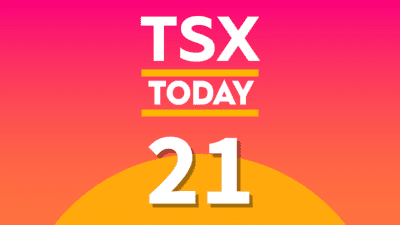We’re down to short strokes for Canada’s interminable election campaign, which culminates on Monday (Oct. 19). At this point, nothing anyone says is going to change my mind because I already cast my vote in the advance polls!
Here at Motley Fool Canada, we have a sharp—nonpartisan—eye for the political implications for investors when it comes to stocks, taxation, and the economy. From all I’ve digested in the media, it looks like a major change may be at hand on these fronts.
The NDP’s Thomas Mulcair had a strong start, but seems to have faded in the stretch drive, so I view this as a two-horse race between Stephen Harper’s Conservatives and Justin Trudeau’s Liberals. Odds are it will be a Minority government, which means Mr. Mulcair may ultimately play a major role as the balance of power.
TFSA contribution limit
For investors, the biggest change that would occur if the Liberals win power is a major setback in contribution room for Tax-Free Savings Accounts, or TFSAs. Earlier this year, the Harper Conservatives kept an earlier promise and bumped annual TFSA room from $5,500 to $10,000. I commented on this issue in an earlier article, which can be found here.
With millions of Canadian baby boomers on the cusp of retirement, it goes without saying that $10,000 in TFSA room per year would be a welcome way to cut taxes on interest, dividends, and capital gains.
The Liberals and NDP would both knock TFSA room back to the prior level of $5,500 on the presumption that the extra contribution room benefits only the so-called rich. Trudeau and his aides are of the view that few Canadians have an extra $10,000 lying around for TFSAs.
I disagree, since many aging boomers and existing retirees may well have hundreds of thousands of dollars’ worth of non-registered investments that are just waiting to become tax free by transferring investments “in kind” to TFSAs. Ditto for RRSP and RRIF assets that could be partly withdrawn, tax paid, then recontributed to TFSAs.
Income splitting
Another issue that can affect investors’ pocketbooks is “income splitting.” Before the campaign started, the Conservatives introduced the “family tax cut,” which lets couples with children split up to $50,000 of income for tax purposes, which translates into a tax cut of thousands a year. Both the Liberals and NDP would cancel income splitting.
Tax rates
Business owners may also experience different tax treatment under a change of Government. The Conservatives have already lowered the federal corporate tax rate to 15% and are promising to cut the small business tax rate from 11% to 9% by the year 2019. Like most left-wing parties, the NDP would raise the corporate tax rate to 17% by the start of 2016.
The Liberals would leave the corporate tax rate at 15% and support the cut to small business taxes to 9%. On the other hand, Trudeau has shrewdly targeted the huge middle class by promising to cut the middle federal income tax bracket from 22% to 20.5%, while creating a new federal 33% tax bracket for those earning income of more than $200,000 a year.
Remember, you have to add provincial tax on top of the federal tax rates, so depending on the province, the top marginal tax rate in these cases would often pass 50%.
Old Age Security and pensions
Another issue that can affect seniors and near-retirees is Old Age Security, or OAS. The Conservatives have already raised the qualifying age for OAS and the Guaranteed Income Supplement (GIS) from 65 to 67, a measure that is gradually kicking in by 2023. This does not affect folks born before April 1, 1958. The NDP and Liberals would both knock the qualifying age back to 65. The NDP also wants to boost the GIS for the nation’s poorest seniors.
The NDP and Liberals both want to raise contributions and benefit levels for the Canada Pension Plan (CPP). The Conservatives initially balked at this—to the point the province of Ontario introduced its own Ontario Retirement Pension Plan (ORPP). Since then, the Conservatives have backtracked somewhat and are talking about permitting “voluntary” extra contributions to the CPP.
Government budgets
Finally, while it may not have an immediate impact on our wallets and tax returns, the three major parties differ in their approach to maintaining balanced budgets. Ahead of schedule, the Conservatives had a surplus in 2014-2015 and promise a balanced budget for the next five years. Surprisingly (to some), the NDP would also balance the books for four straight years, starting in 2016-2017.
The Liberals plan for three years of deficits to “spur” the economy, Justin Trudeau famously having declared that budgets will “balance themselves.”







